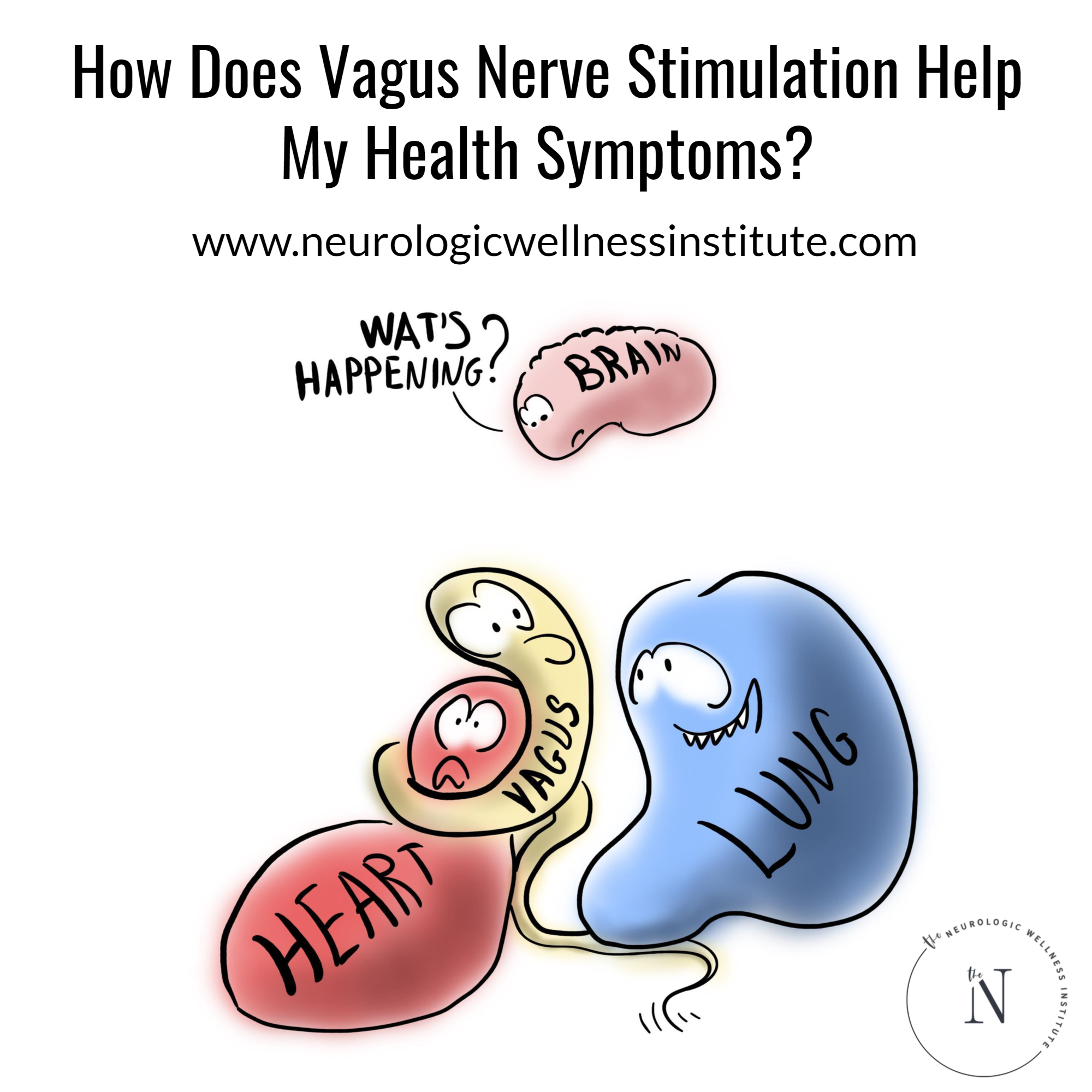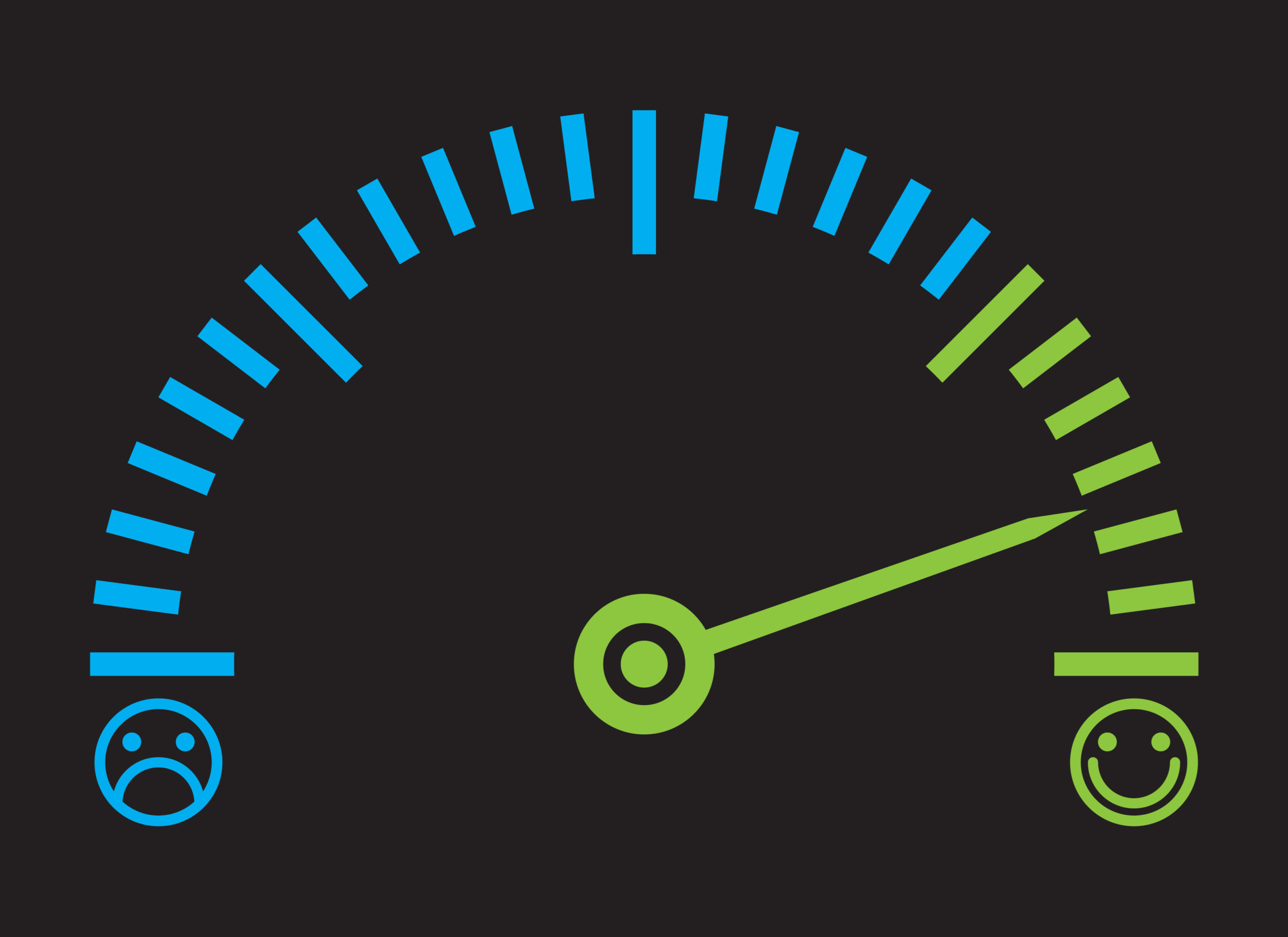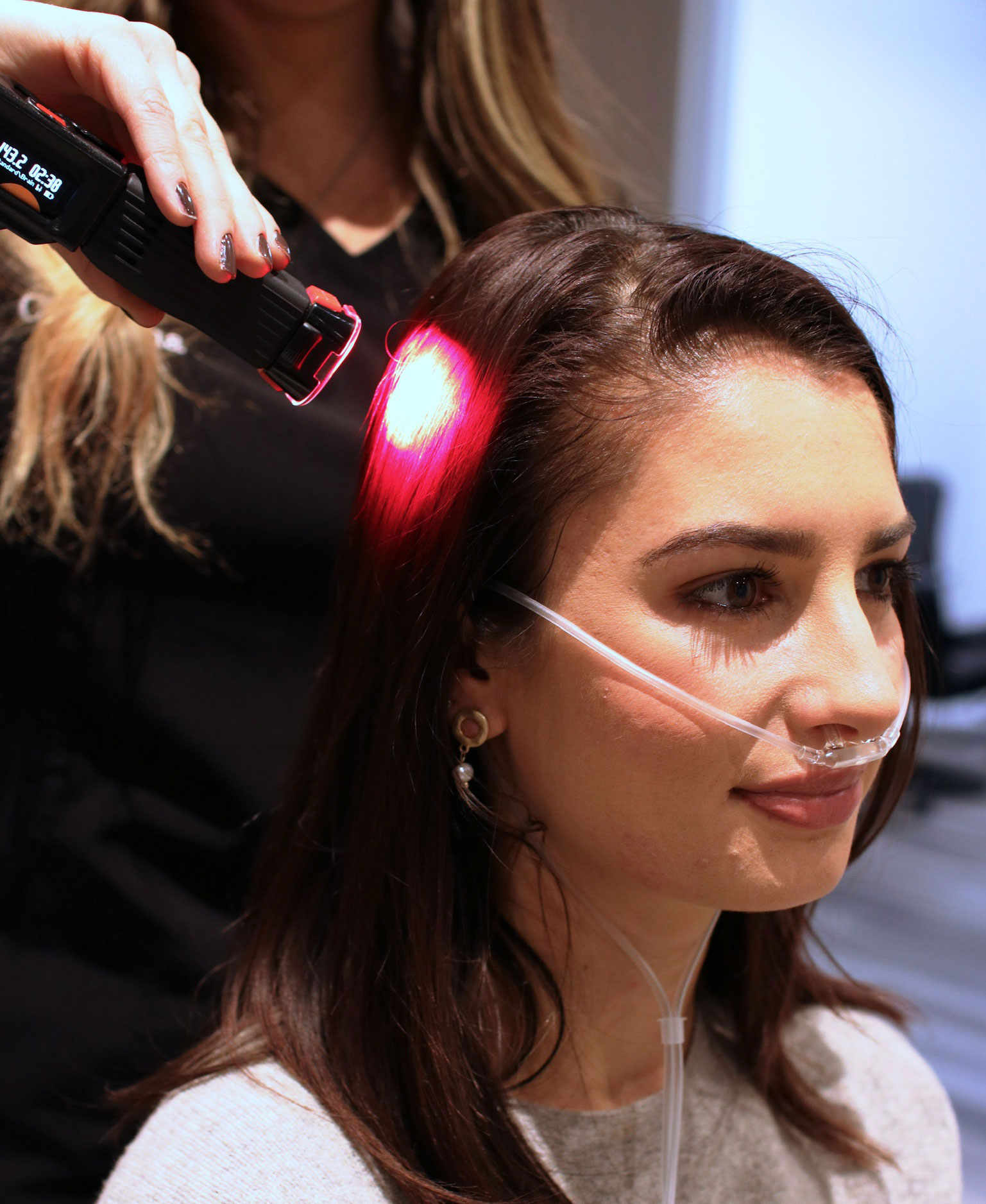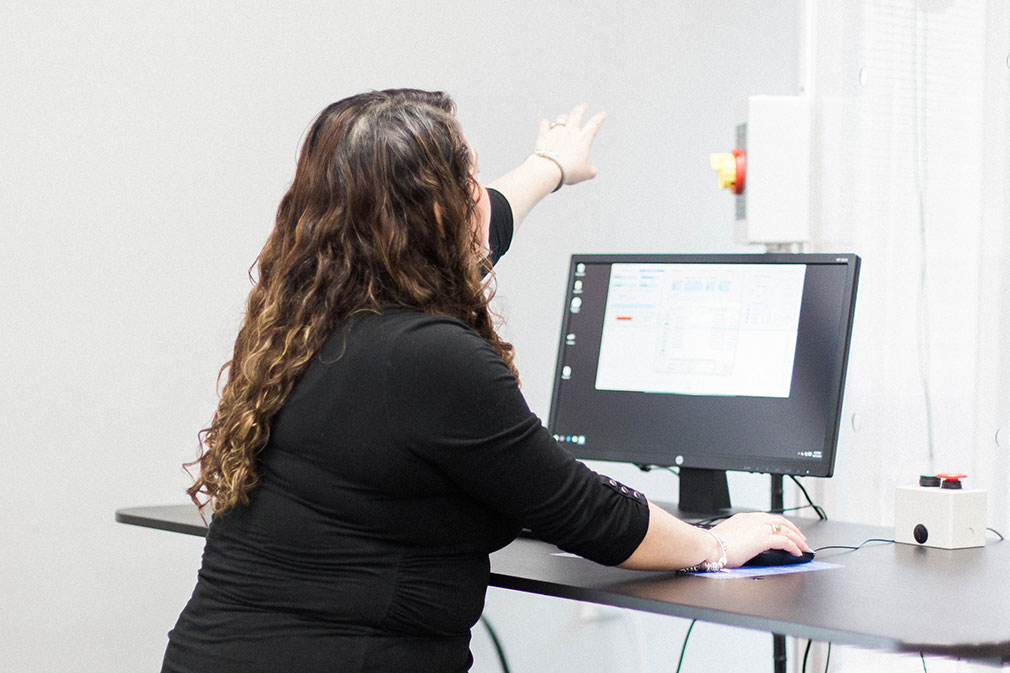 Vagus Nerve Stimulation
Vagus Nerve Stimulation
Before we begin our discussion on the benefits of vagus nerve stimulation, let’s start with some definitions.
What is The Vagus Nerve?
The vagus nerve is the longest of the 12 nerves in your head (nerves of the head are referred to as “cranial nerves”). The vagus nerve is associated with controlling your parasympathetic system also known as your “rest and digest” system. This is the opposite of your sympathetic system which is known as your “stress” or “fight or flight” system.
The vagus nerve has a very important role in regulating a wide range of functions such as:
-
- Heart rate
- Breathing
- Digestion
- Ability to swallow
- Ability to speak
The vagus nerve is also responsible for regulating…
-
- Metabolism
- Endocrine system
- Immune system
The Path of the Vagus Nerve
The vagus nerve starts in your brain and extends down through your neck and chest into your stomach. During this long journey, the vagus nerve allows the brain to communicate with a large number of organs (ex. heart), glands (ex. thyroid), and muscles (ex. larynx) throughout the body. These organs, glands, and muscles send signals up through the vagus nerve into the brain, allowing them to tell the brain their current status. Based on these signals, the brain can appropriate control and regulate these organs, glands, and muscles. For example, after you eat, your digestive system will send messages through your vagus nerve to tell your brain what it needs to properly digest your meal. The brain will then send signals down through your vagus nerve to make sure all of your organs, glands and muscles are releasing the correct chemicals and are effectively moving your food through your digestive tract to ensure proper digestion.
What is Vagus Nerve Stimulation?
Vagus Nerve Stimulation can be used to describe any technique that stimulates or activates the vagus nerve. In 1880, it was shown that manual massage and compression of the carotid artery in the neck could suppress seizures through stimulating the vagus nerve. Electrical stimulation of the vagal nerve began are a variety of therapies that can stimulate the vagus nerve, however, Vagus Nerve Stimulation is generally classified into two groups, invasive and non-invasive. Research has shown that the same areas of the brain are activated in both invasive and non-invasive Vagus Nerve Stimulation.
Invasive Vagus Nerve Stimulation
Invasive Vagus Nerve Stimulation involves a surgical procedure in which an electrical generator is implanted into the body and directly connected to the vagus nerve through an electric lead wire. We do not perform Invasive Vagus Nerve Stimulation at Neurologic Wellness Institute.
Non-invasive Vagus Nerve Stimulation
Non-invasive Vagus Nerve Stimulation typically refers to light electrical stimulation to areas of the skin which have been shown to stimulate the vagus nerve, such as the ear and the neck. Your ear has three different nerves which allow you to feel sensation from your ear. Each nerve supplies feeling for a different part of your ear. One of the three nerves of your ear is a branch of the vagus nerve. Therefore, it is very common for our patients at Neurologic Wellness Institute to have low-level electric stimulation of a specific part of their ear to stimulate the vagus nerve. Electric stimulation on the skin of the neck over where the vagus nerve is located has also shown to be able to stimulate the vagus nerve. The intensity of the electric stimulation should be enough where you feel it, but never enough to cause any pain or discomfort. Our doctors at Neurologic Wellness Institute are well trained in a number of other forms of Vagus Nerve Stimulation aside from low-level electric stimulation as many of our therapies specifically target the vagus nerve for its therapeutic benefits.
How Does Vagus Nerve Stimulation Help My Symptoms?
Vagus Nerve Stimulation has been suggested to be beneficial for a wide range of health conditions including:
-
- Brain injuries/concussions
- Chronic pain
- Headaches
- Anxiety
- Depression
- Inflammatory conditions
- Tinnitus
- Heart failure
- Neurodegenerative disorders (Alzheimer’s, Parkinson’s)
- Epilepsy
- Bipolar disorder
- Obesity
One Therapy for Multiple Conditions…How?
Vagus Nerve Stimulation has been proven to reduce sympathetic nerve activity. Increased activity of your sympathetic nervous system, known as your “stress” system, is associated with the following:
-
- Elevated blood pressure
- Impaired cognitive function and memory
- Impaired blood sugar levels/insulin resistance
- Increased inflammation
- Impaired thyroid function
- Decreased bone density and muscle mass
- Disrupted sleep
By reducing this sympathetic activity, Vagus Nerve Stimulation offers a wide range of benefits for our patients.
Reducing Inflammation with Vagus Nerve Stimulation
Vagus Nerve Stimulation has been shown to have an anti-inflammatory effect. The vagus nerve is a major component of the “neuroendocrine-immune axis” which is involved with coordinating your brain, endocrine system, and immune system in order to defend your body against infection and/or inflammation. The vagus nerve is also involved in returning your body back to balance, so when you do not have an infection, your immune system calms down and does not continue to fight. Many of our patients have problems in which their immune system is abnormally overactive (as it often is with conditions such as autoimmunity). By reducing inflammation and “rebalancing” the immune system, many of our patients experience a reduction in their symptoms, improvement of quality of life and an increase in healing/recovery.
Increasing BDNF
Vagus Nerve Stimulation has been shown to release a chemical, Brain-Derived Neurotrophic Factor (BDNF), that helps your brain grow new cells and new connections. Increased levels of BDNF are associated with learning, memory, and higher thinking. Many disorders are associated with a decrease in BDNF causing problems making new brain cells and new brain connections. When the levels of BDNF return to normal, many of our patients find it easier to concentrate and remember things. Therefore, Vagus Nerve stimulation is an important therapy for many of our patients suffering from brain fog and memory problems. Many of our therapies are designed to improve brain connections, and using Vagus Nerve Stimulation in conjunction with our other treatments allows our therapies to be more effective.
Vagus Nerve Stimulation and the Barriers
Vagus Nerve Stimulation has been shown to improve the barrier systems such as the blood-brain barrier, the gut-barrier, and the lung barrier. We have barriers in our body which only allow certain chemicals to pass while preventing other chemicals from going through. You can think of this as the border control of a country, where the officers only allow people through the border if they have the proper paperwork. Someone who does not have the appropriate documents gets sent back and is not allowed to pass. Many conditions are associated with a breakdown in these barrier systems. When chemicals are inappropriately allowed to pass through the barrier systems, it can lead to chronic inflammation and autoimmunity resulting in chronic disease and disability. Therefore, Vagus Nerve Stimulation is a very promising therapy at restoring integrity in these barrier systems and improving chronic health problems for many of our patients.
How do I find out more information about whether non-invasive Vagus Nerve Stimulation can help me or someone I know?
For more information on the type of conditions, our clinicians help with, schedule a consult with one of our patient care coordinators.
REFERENCES:
Bonaz et al. Anti-inflammatory properties of the vagus nerve: potential therapeutic implications of vagus nerve stimulation. J Physiol. 2016.
Clancy et al. Non-invasive vagus nerve stimulation in healthy humans reduces sympathetic nerve activity. Brain Stimul. 2014:7(6);871-877.
Furmaga et al. Vagal Nerve Stimulation Rapidly Activates Brain-Derived Neurotrophic Factor Receptor TrkB in Rat Brain. PLoS One. 2012.
He et al. Auriculo-vagal afferent pathways and its role in seizure suppression in rats. BMC Neurosci. 2013.
Howland. Vagus Nerve Stimulation. Curr Behav Neurosci Rep. 2014:1(2);64-73.
Huang et al. Effect of transcutaneous auricular vagus nerve stimulation on impaired glucose tolerance. BMC Complement Altern Med. 2014.
Levy et al. Vagal nerve stimulation modulates gut injury and lung permeability in trauma-hemorrhagic shock. J Trauma Acute Care Surg. 2012:73(2);338-342.
Lopez et al. Vagal nerve stimulation decreases blood-brain barrier disruption after traumatic brain injury. J Trauma Acute Care Surg. 2012:72(6);1562-1566.
Marik et al. Stress hyperglycemia: an essential survival response! Critical Care. 2013:17(2);305.
Vrijkotte et al. Effects of Work Stress on Ambulatory Blood Pressure, Heart Rate, and Heart Rate Variability. Hypertension. 2000:35(4);880-886.
Yakunina et al. BOLD fMRI effects of transcutaneous vagus nerve stimulation in patients with chronic tinnitus. PLoS One. 2018.
Zhao et al. Transcutaneous auricular vagus nerve stimulation protects endoteoxemic rate from lipopolysaccharide-induced inflammation. Evid Based Complement Alternat Med. 2012.




